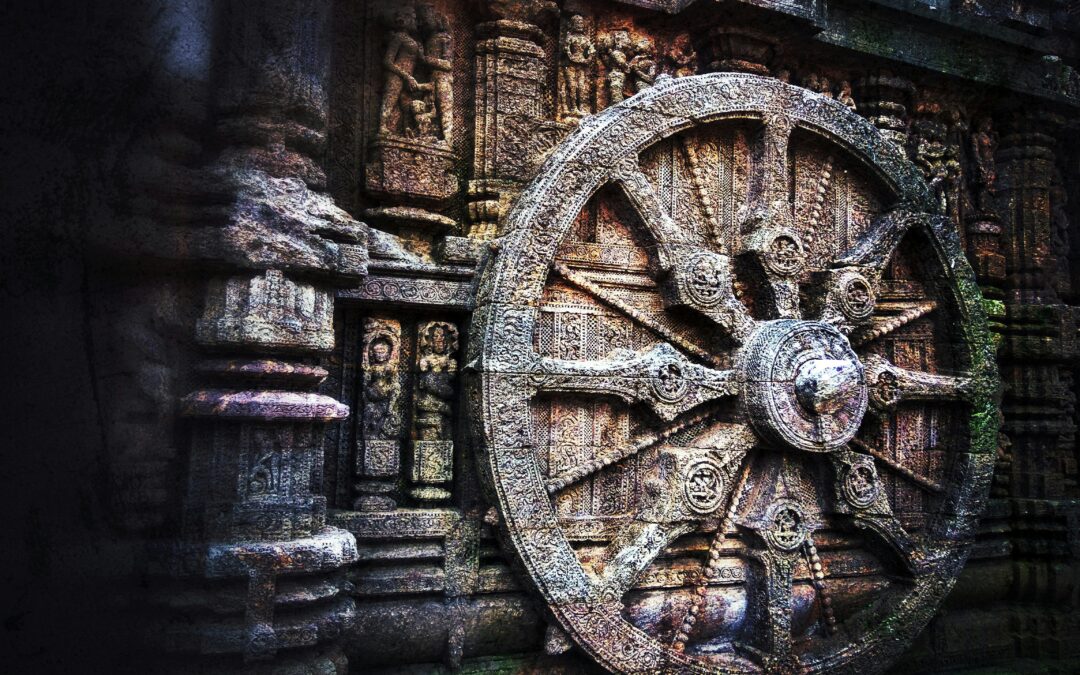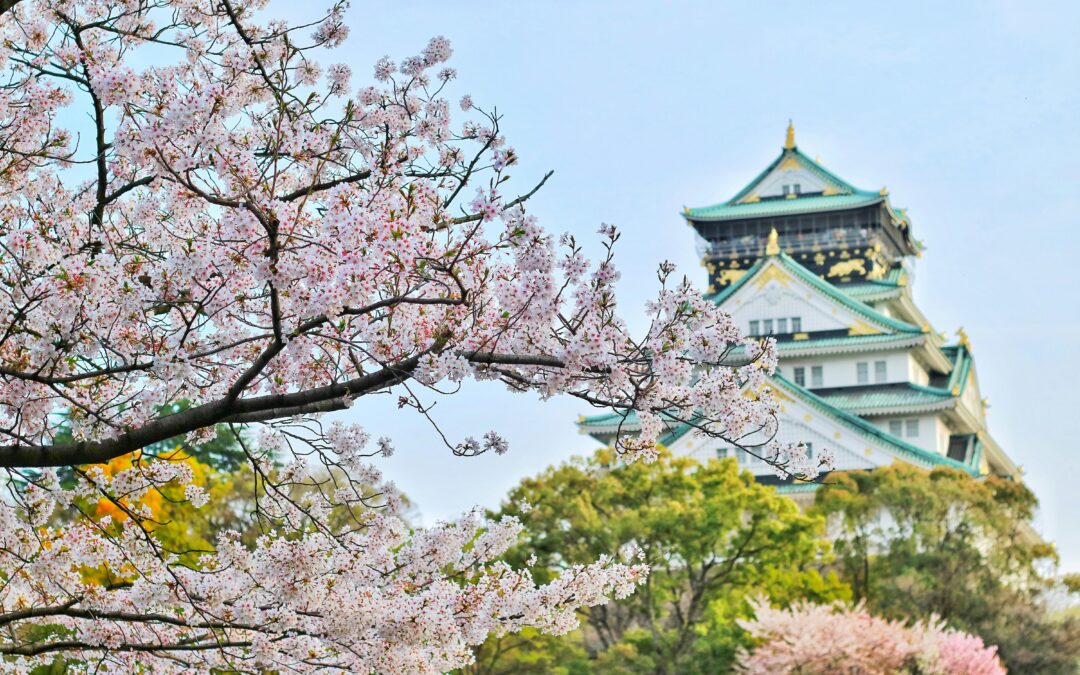The Rich and Diverse World of Indian Food
Indian food is a tapestry of flavors, colors, and aromas that reflects the country’s rich cultural heritage and history. From the spicy curries of the South to the savory kebabs of the North, Indian cuisine is as diverse as its landscape.
Click Here to Know More.
Table of Contents
1. A Melting Pot of Flavors
Indian food is a symphony of flavors, where the art of spice blending takes center stage. The complexity of Indian cuisine lies in its ability to harmonize a myriad of spices and herbs, creating dishes that are as rich in taste as they are in history. Key spices such as cumin, coriander, turmeric, and garam masala are the building blocks of Indian cuisine. These spices are often roasted or ground to enhance their flavors, then carefully combined to create intricate flavor profiles.
For instance, a dish like chicken curry might blend the warmth of cinnamon with the earthiness of cumin, the heat of chili, and the tang of tamarind, resulting in a dish that is both robust and nuanced. Each region in India has its own signature spice blend, influenced by local ingredients and traditions. In Rajasthan, for example, the use of dried chilies and tangy yogurt in curries is prevalent, while in Kerala, coconut and curry leaves dominate.
Indian food is not just about heat; it’s about balance. Sweet, sour, salty, bitter, and umami flavors are skillfully balanced in every dish, offering a multi-dimensional culinary experience. This blend of spices not only enhances taste but also has health benefits, as many spices used in Indian cooking, like turmeric and ginger, are known for their anti-inflammatory properties. The result is a cuisine that is both satisfying to the palate and nourishing to the body.
2. Regional Diversity
India’s culinary diversity is a reflection of its vast geography, varied climates, and rich cultural tapestry. The cuisine changes dramatically from one region to another, influenced by local ingredients, religious practices, and historical connections. In Northern India, the cuisine is characterized by rich, hearty dishes that make liberal use of dairy products like ghee, yogurt, and cream. Here, you’ll find the famous Mughlai cuisine, which includes dishes like biryani, kebabs, and butter chicken.
The North’s cold climate lends itself to the creation of warming, spice-laden curries and breads like naan and paratha. In contrast, Southern Indian cuisine is predominantly vegetarian and features a variety of rice-based dishes, dosas, and idlis, often served with coconut-based chutneys and tangy sambar. The region’s proximity to the coast means seafood also plays a significant role, with dishes like fish curry being staples.
Western India offers a diverse range of flavors, from the sweet and savory snacks of Gujarat to the spicy curries of Maharashtra. The coastal state of Goa, with its Portuguese influences, is famous for its seafood dishes like prawn balchão and fish vindaloo. Meanwhile, the Eastern region, particularly Bengal, is renowned for its delicate and flavorful fish curries, sweets like rasgulla, and the liberal use of mustard oil. Each of these regional cuisines tells a story of the people and the land, making Indian food a true reflection of the country’s cultural and geographical diversity.
3. Vegetarian Delights
India is often regarded as the vegetarian capital of the world, with a long-standing tradition of plant-based cuisine deeply rooted in religious and cultural practices. Approximately 30-40% of the Indian population is vegetarian, largely due to Hindu, Jain, and Buddhist beliefs that emphasize non-violence and respect for all living beings. This has led to the development of a vast array of vegetarian dishes that are both flavorful and nutritious.
Unlike in many other cuisines where vegetarian options might be limited, Indian cuisine offers an abundance of vegetarian choices that are central to the meal. Staples like dal (lentils), paneer (cottage cheese), and a wide variety of vegetables are prepared in countless ways, each more innovative than the last. For instance, lentils can be used to make hearty dals, light soups, or even crispy fritters. Paneer, a fresh cheese, is incredibly versatile and can be grilled, curried, or sautéed with spices and vegetables. Indian vegetarian cuisine is also known for its use of pulses, legumes, and grains like chickpeas, mung beans, and millets, which provide essential proteins and nutrients.
The widespread use of spices and herbs ensures that these dishes are never bland; instead, they are bursting with flavor. Additionally, the emphasis on using seasonal and locally sourced produce means that Indian vegetarian dishes are not only delicious but also sustainable and eco-friendly, offering a satisfying and healthy alternative to meat-based meals.
4. Indian Food and Health
Indian cuisine is not just a feast for the senses; it is also deeply intertwined with the principles of health and well-being. Many traditional Indian dishes are rooted in the ancient practice of Ayurveda, which emphasizes balance and the use of natural ingredients to promote physical and mental health. According to Ayurvedic principles, food is categorized based on its taste, energy, and post-digestive effect, and each person’s diet should be tailored to their specific body type, or dosha.
This holistic approach is evident in Indian cooking, where the use of spices and herbs is not just for flavor, but also for their medicinal properties. For example, turmeric, a staple in many Indian dishes, is known for its anti-inflammatory and antioxidant effects. Similarly, ginger is commonly used to aid digestion and boost immunity, while cumin is recognized for its ability to improve metabolism and alleviate digestive issues. Indian meals are often balanced, including a mix of grains, legumes, vegetables, and dairy, ensuring a comprehensive intake of nutrients.
The tradition of cooking with ghee, a type of clarified butter, is another aspect of Indian cuisine that aligns with health-focused practices. Ghee is considered a healthy fat that aids in digestion and absorption of nutrients. Additionally, many Indian dishes are naturally gluten-free, vegetarian, or vegan, catering to a wide range of dietary preferences. This focus on health, combined with the vibrant flavors of Indian cuisine, makes it a unique and holistic approach to eating.
5. Street Food: A Culinary Adventure
Indian street food is a vibrant and integral part of the country’s culinary landscape, offering a sensory overload of flavors, textures, and aromas. Each region in India has its own unique street food culture, shaped by local ingredients, climate, and culinary traditions. Street food in India is not just about quick and affordable snacks; it’s a reflection of the diverse culinary heritage of the country. In the bustling streets of Delhi, you’ll find chaat, a tangy and spicy snack made with fried dough, potatoes, chickpeas, and a medley of chutneys, topped with crunchy sev and fresh coriander.
Mumbai’s vada pav, often referred to as the Indian burger, is a favorite among locals, consisting of a spiced potato fritter sandwiched in a bun and served with chutney. In Kolkata, street food lovers can indulge in kathi rolls, a wrap filled with skewered meats, vegetables, and eggs, all seasoned with spices and herbs. The southern cities of Chennai and Bangalore are known for their dosas, thin and crispy crepes made from fermented rice and lentil batter, served with coconut chutney and sambar. Street food in India is often prepared fresh in front of you, ensuring that you get to experience the flavors at their peak.
Beyond just satisfying hunger, Indian street food is a cultural experience, providing a window into the local way of life. It’s a culinary adventure that offers something for everyone, from the spice enthusiast to the sweet-toothed traveler.
Best Indian Food dishes:
Here’s an overview of some authentic Indian foods that are deeply rooted in the country’s culinary traditions:
1. Rogan Josh
Rogan Josh is a classic dish from Kashmir, known for its aromatic flavors and vibrant red color. This dish features tender pieces of lamb or goat slow-cooked in a gravy made from yogurt, garlic, and a mix of spices including Kashmiri red chilies, which give it its signature color without making it too spicy. The dish is often finished with a dollop of ghee, which adds richness and enhances the flavors. Rogan Josh is a staple in Kashmiri cuisine and reflects the region’s Persian influence.

2. Dal Makhani
Dal Makhani is a staple in North Indian cuisine, especially in Punjab. Made from whole black lentils (urad dal) and kidney beans (rajma), this dish is slow-cooked to perfection with butter and cream, giving it a rich, creamy texture. The lentils are simmered for hours in a blend of spices including cumin, garlic, ginger, and garam masala, allowing the flavors to develop deeply. Dal Makhani is traditionally served with naan or rice and is a comforting dish that is beloved by many.

3. Pani Puri (Golgappa)
Pani Puri is a popular street food that originated in the Indian subcontinent and is a favorite across the country. It consists of small, round, hollow puris (crispy fried dough) filled with a mixture of flavored water (pani), tamarind chutney, chaat masala, potato, onion, and chickpeas. The combination of the crunchy puri, tangy water, and spicy filling creates an explosion of flavors in every bite. Pani Puri is particularly popular in states like Maharashtra, Gujarat, and West Bengal, each with its own variation.

4. Dhokla
Dhokla is a savory snack from the state of Gujarat, made from fermented rice and chickpea batter. It is steamed rather than fried, making it a healthy option. The batter is spiced with green chili and ginger, then steamed until it becomes light and fluffy. After steaming, the dhokla is tempered with mustard seeds, curry leaves, and green chilies, and garnished with fresh coriander and grated coconut. It’s typically served with green chutney and is a popular breakfast or snack item in Gujarat.

5. Saag Paneer
Saag Paneer is a popular North Indian dish made from paneer (Indian cottage cheese) cooked in a spiced spinach gravy. The spinach, or saag, is pureed and then simmered with spices like cumin, garlic, and garam masala to create a rich, flavorful sauce. Paneer, which is mild in flavor, absorbs the spices well and adds a creamy texture to the dish. Saag Paneer is often enjoyed with naan or roti and is a comforting, nutritious meal that showcases the use of leafy greens in Indian cuisine.

6. Vada Pav
Vada Pav is a quintessential street food from Mumbai, often referred to as the “Indian burger.” It consists of a spicy potato fritter (vada) sandwiched between a pav (soft bread roll), along with various chutneys and a sprinkle of garlic chutney powder. The vada is made from mashed potatoes mixed with spices like mustard seeds, turmeric, and green chili, then coated in gram flour batter and deep-fried. Vada Pav is a quick, filling snack that’s deeply embedded in Mumbai’s food culture.

7. Sambar
Sambar is a traditional South Indian dish, particularly popular in Tamil Nadu, Kerala, and Karnataka. It’s a lentil-based vegetable stew made with toor dal (pigeon peas) and a variety of vegetables like drumsticks, pumpkin, and carrots, flavored with tamarind and a blend of spices. The dish is known for its tangy, spicy flavor and is typically served with rice, idli, dosa, or vada. Sambar is an essential part of South Indian cuisine and is enjoyed at any time of the day.

8. Hyderabadi Biryani
Hyderabadi Biryani is a famous dish from Hyderabad, known for its aromatic and flavorful rice. This biryani is made with basmati rice, marinated meat (usually chicken, goat, or lamb), yogurt, and a blend of spices like saffron, cardamom, and cloves. The dish is cooked using the “dum” method, where the ingredients are layered in a pot and slow-cooked over a low flame, allowing the flavors to meld together. Hyderabadi Biryani is often served with raita (yogurt-based side dish) and is a highlight of Mughlai cuisine.

9. Chole Bhature
Chole Bhature is a popular North Indian dish, especially favored in Punjab. This dish consists of spicy, tangy chickpea curry (Chole) served with deep-fried bread (Bhature). The chickpeas are cooked with a blend of spices, including cumin, coriander, turmeric, and garam masala, along with tomatoes and onions to create a rich, flavorful curry. Bhature are large, fluffy, and golden brown, made from a dough of refined flour and yogurt, which gives them their soft and airy texture. This combination makes for a hearty and satisfying meal, often enjoyed for breakfast or lunch.

10. Prawn Malai Curry
Prawn Malai Curry is a luxurious and creamy dish from the coastal regions of India, particularly from Bengal and Kerala. The dish features prawns cooked in a rich, coconut-based gravy, flavored with a blend of aromatic spices such as cumin, coriander, and turmeric. The “malai” in the name refers to the creaminess imparted by the coconut milk, which creates a smooth, velvety sauce. Prawn Malai Curry is often served with steamed rice or naan, offering a delightful contrast of textures and flavors, with the sweetness of the coconut balancing the spices.

These dishes represent the rich and diverse culinary heritage of India, each offering a unique taste of the country’s authentic flavors.
Experience the world like never before with Bluejay-Travels! Whether you’re dreaming of pristine beaches, exploring ancient cultures, or seeking thrilling adventures, we’ve got you covered. At Bluejay-Travels, we specialize in crafting personalized travel experiences that cater to your unique desires and preferences. From luxurious escapes in the Maldives to immersive cultural journeys through Europe, our expert team is dedicated to ensuring every detail of your trip is flawless and unforgettable.
When you choose Bluejay-Travels, you’re not just booking a vacation—you’re embarking on an adventure meticulously curated to create memories that will last a lifetime. Let us take care of all the planning, so you can focus on soaking up every moment of your dream getaway. Discover the world with Bluejay-Travels—where your travel dreams become reality!
FAQs
1. What is famous food in India?
The most popular and best dishes you should try in India
Biriyani – Famous specialty of Bangalore.
Famous curry.
Thali traditional Indian dish.
Indian Specialty – Tandoori grilled chicken.
Tikka Masala chicken.
Pani Puri.
Samosa cake.
Falooda dessert.
2. What are the top 5 Indian dishes?
Here are few such popular Indian dishes that has made their mark all across the globe:
Chicken Tikka Masala. This delicious charcoal burnt, clay oven-cooked chicken was firstly cooked in Lahore.
Murg Makhni (Butter chicken)
Tandoori Chicken.
Biryani.
Dal Makhni.
Samosa.
Chaat.
Pani puri.
3. What is India’s main dish?
Curry is a catchall term used to describe richly spiced dishes popular in South and Southeast Asia. They are hugely important to the cuisine of India. Much of India’s population is vegetarian, so meat-free curries are common.








0 Comments